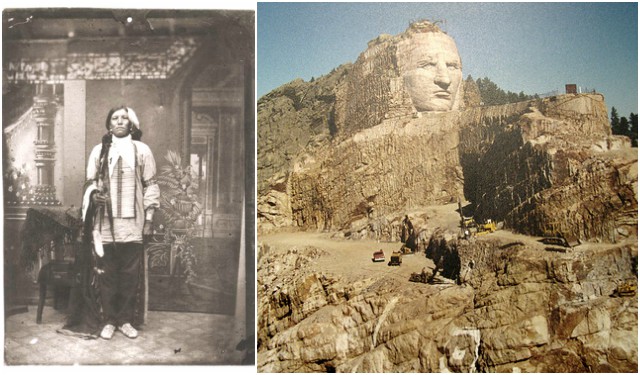Located in South Dakota’s Black Hills, not far away from Mount Rushmore, the Crazy Horse Monument is a work in progress, started back in 1948.
Lakota warrior Crazy Horse has long been a controversial figure. He fought against George Armstrong Custer at the Battle of the Little Big Horn and also he led his tribe against settlers and miners in the Dakotas, Montana. and Wyoming. He died on September 5, 1877.
Korczak Ziolkowski began work on Crazy Horse Memorial in 1948. Once complete, this tribute to the Lakota leader will be the largest mountain carving in South Dakota, and the world.
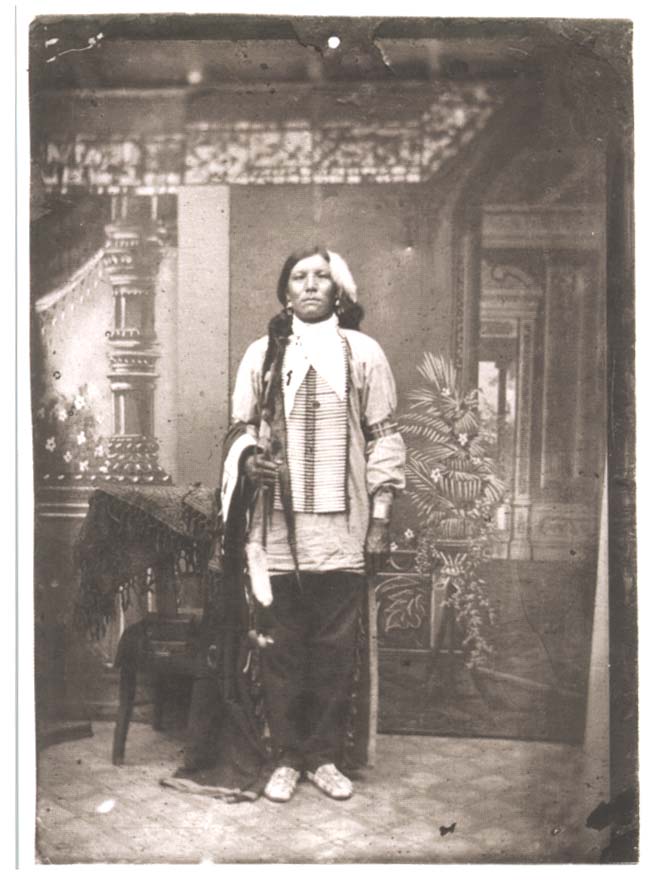
Lakota Chief Standing Bear and sculptor Korczak Ziolkowski started the project in 1946 by identifying Thunderhead Mountain as the place to create the Crazy Horse Monument. In 1948 the project officially began when the first explosives were detonated to start sculpting the rock face. It’s likely to take more than a century to be completed.
When completed, the sculpture will stand 641 feet long and 563 feet tall making it the world’s largest sculpture by far. The head of Crazy Horse alone is 27 feet taller than the six-story heads of Mount Rushmore. It’s taller than the Washington Monument and well over two football fields wide.
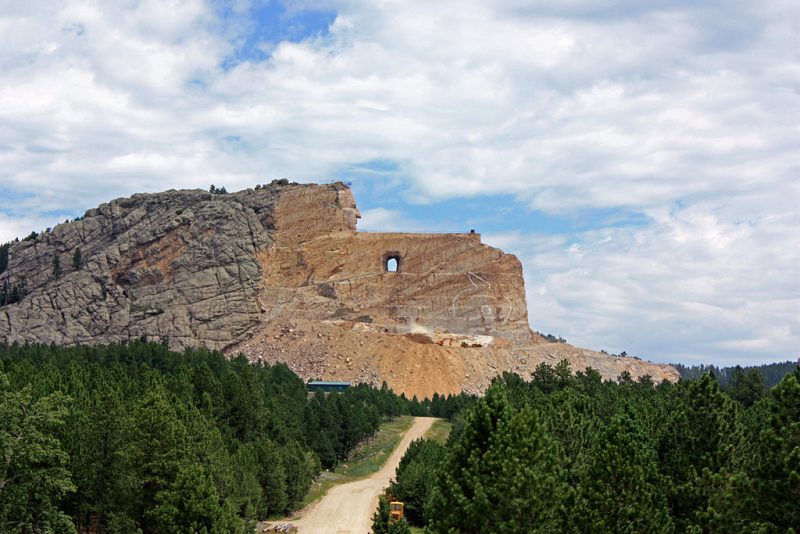
Chief Henry Standing Bear, who was the leader of the Lakota tribe, didn’t like the Mount Rushmore National Memoriam which was completed seven years ago, and he decided to ask Ziolkowski if he could carve a monument in honor of a Native American legend.
Ziolkowski accepted his offer and worked on the carving until his death in 1982 at age 74, sixteen years before the face of the carving was completed.
His wife Ruth Ziolkowski continued with the project from the 1980s to the 2010s. She was president and CEO of the Crazy Horse Memorial Foundation. She focused on Crazy Horse’s face and not on the horse as her husband planned.
Ruth Ziolkowski died 21 May 2014, at the age of 87. Seven of her ten children work on the project even today.
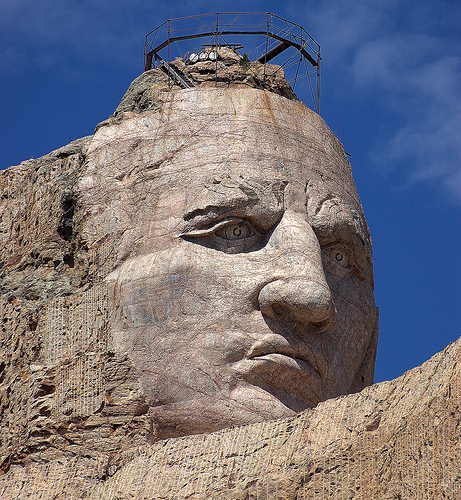
Many descendants of Crazy Horse think that the monument is in a way offensive to their culture. For example, Elaine Quiver, a descendant of Crazy Horse, in an interview with Voice of America, said that Standing Bear had no right to order the monument.
“They don’t respect our culture because we didn’t give permission for someone to carve the sacred Black Hills where our burial grounds are,” Quiver said. “They were there for us to enjoy and they were there for us to pray. But it wasn’t meant to be carved into images, which is very wrong for all of us. The more I think about it, the more it’s a desecration of our Indian culture. Not just Crazy Horse, but all of us.”
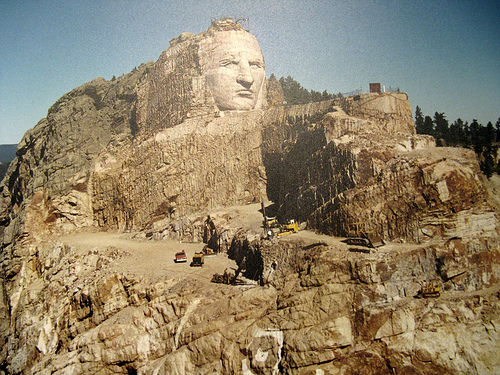
After 50 years of work, Crazy Horse’s 87-foot head was completed in 1998, but no one knows exactly when the entire monument will be completed.
It is now nearly seven decades in the making. In comparison, most historians say Egypt’s Great Pyramid took about 20 years to finish.
